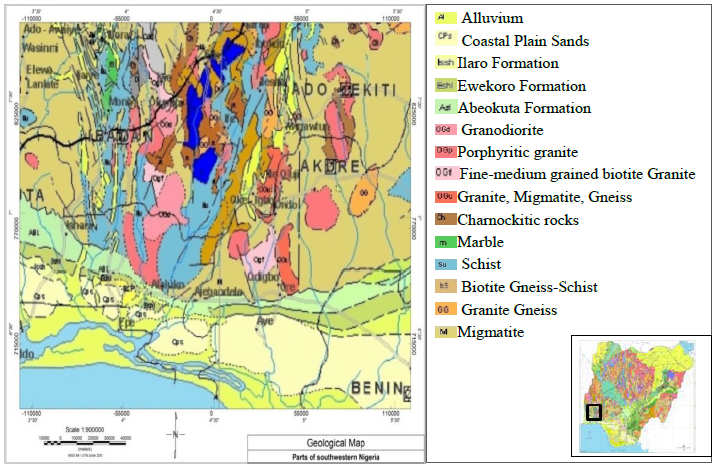Lithological and structural mapping of parts of southwestern Nigeria using aeromagnetic data
Abstract
There have been several magnitude earthquakes in Nigeria since 1933. However, their exact causes are yet unascertained. This study focuses on delineation of underground geologic frameworks and hydrothermal alteration zones that could encourage seismic energy transmission, groundwater storage and mineralization within parts of Southwestern Nigeria. Data optimization was conducted using vertical derivatives, horizontal derivative, upward continuation, and analytic signal approach. The study area is dissected by sinistral and dextral faults along NE-SW, NW-SE, N-S, E-W directions. The NE-SW trend is typical of major lithospheric processes and fracture lines cross-cutting formation(s) underlying Ikogosi warm spring, Ipole-Iloro waterfall, Arinta waterfall and Effon-Alaaye waterfall (all in Ekiti state), and Erin-Ijesha waterfall (Osun State) which also dominated the current position of granite and adjoining fractures. The quartzite belt stretching in NE–SW direction is an aquifer network with significant storage potential. The NNE-SSW trends is typical of major lithospheric processes and fracture lines cross-cutting formation(s) underlying Ikogosi warm spring, Ipole-Iloro waterfall, Arinta waterfall and Effon-Alaaye waterfall (all in Ekiti state), and Erin-Ijesha waterfall (Osun State) which also dominated the current position of granite and adjoining fractures. The quartzite belt stretching in NE–SW direction is an aquifer network with significant storage potential. The NNE-SSW trends relates to Ifewara-Kalangai fault while NW-SE depicts the separation of South American from African plate. The overlap between NW-SE and NE-SW lineaments suggest fractures produced by similar tectonic events, probably the Pan African orogeny. Also, locations of lineament intersection are plausible zones for groundwater, geothermal and hosts to mineralized targets as evidenced by small scale mining activities in the area. These fault lines serve as channels for the transmission of seismic energy that gives rise to earth tremors. The mapped lineaments serve as guide in solid mineral prospecting and geothermal exploration. Results from this study has enriched existing knowledge about future earthquake occurrence which will assist in hazard prevention.

Published
How to Cite
Issue
Section
Copyright (c) 2024 Emmanuel Ike, Adetola Sunday Oniku, Sabastine Chinedu Ezike, Rodney Ewusi-Wilson

This work is licensed under a Creative Commons Attribution 4.0 International License.







